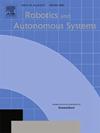End2end vehicle multitask perception in adverse weather
IF 4.3
2区 计算机科学
Q1 AUTOMATION & CONTROL SYSTEMS
引用次数: 0
Abstract
In the research of autonomous driving technology, due to the lack of datasets for various extreme weather conditions, autonomous driving perception in adverse weather is a challenge. To address this problem, this paper introduces an end-to-end multi-task perception system that combines labeled supervised learning and unsupervised domain adaptive learning for bad weather. The key innovations of this system include: a multi-task learning framework that simultaneously handles object detection, lane line detection, and drivable area detection, improving both efficiency and cost-effectiveness for autonomous driving in complex environments; a domain adaptation strategy using unlabeled data for adverse weather, which enables the system to perform robustly without requiring specific labels for harsh weather conditions; the system has strong generalization ability, demonstrated by achieving an prediction mAP of 83.86%, a drivable area mIoU of 91.59%, and lane detection accuracy of 83.9% on the BDD100K dataset, as well as an mAP of 74.85% on the Cityscapes fog dataset without additional training, highlighting its effectiveness in unseen, adverse conditions. The scalable and generalized solution provided in this paper can achieve high-performance navigation in various extreme environments. By combining supervised and unsupervised learning techniques, this model can not only cope with severe weather but also further generalize to unseen scenarios.
求助全文
约1分钟内获得全文
求助全文
来源期刊

Robotics and Autonomous Systems
工程技术-机器人学
CiteScore
9.00
自引率
7.00%
发文量
164
审稿时长
4.5 months
期刊介绍:
Robotics and Autonomous Systems will carry articles describing fundamental developments in the field of robotics, with special emphasis on autonomous systems. An important goal of this journal is to extend the state of the art in both symbolic and sensory based robot control and learning in the context of autonomous systems.
Robotics and Autonomous Systems will carry articles on the theoretical, computational and experimental aspects of autonomous systems, or modules of such systems.
 求助内容:
求助内容: 应助结果提醒方式:
应助结果提醒方式:


